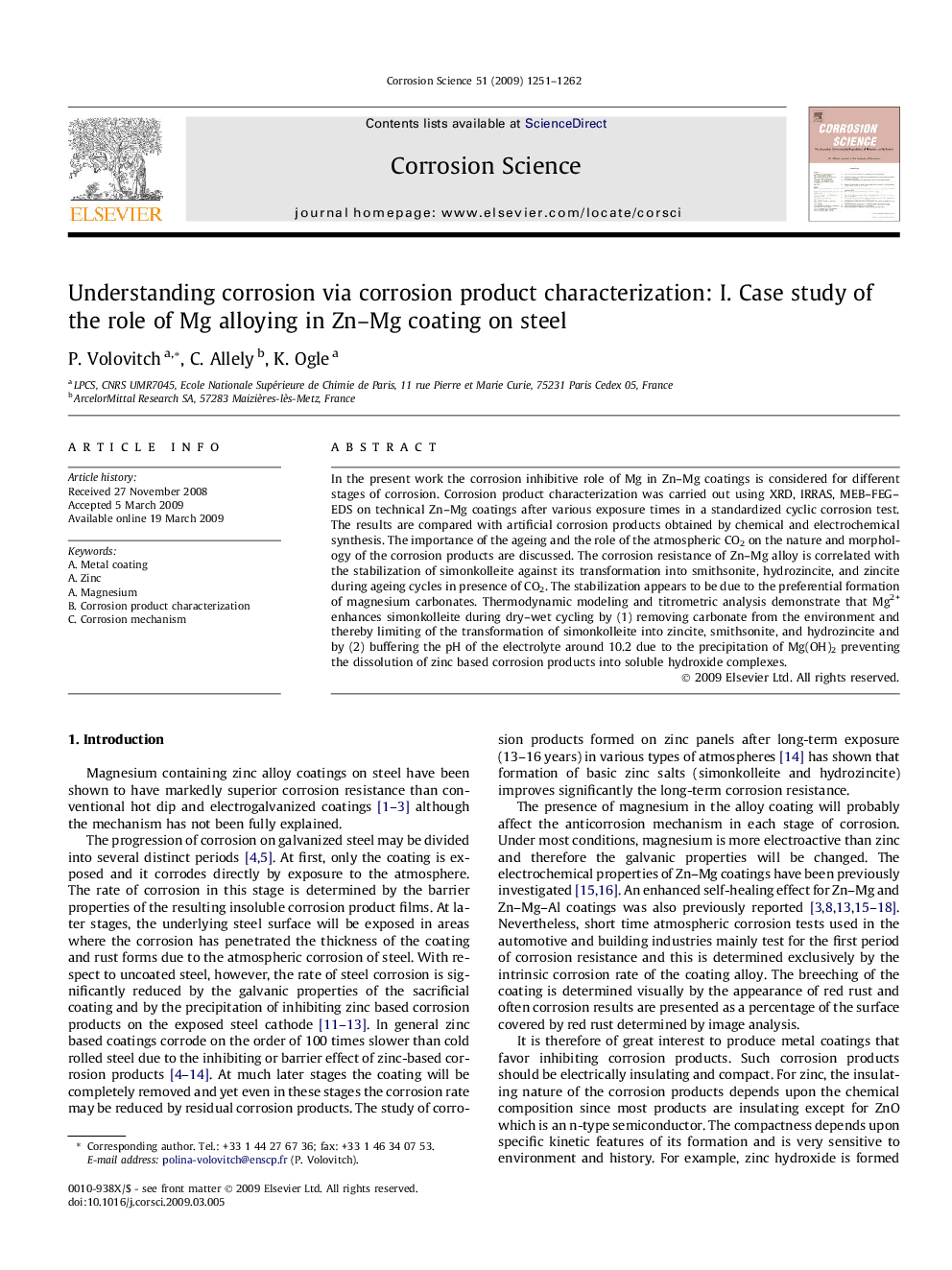| Article ID | Journal | Published Year | Pages | File Type |
|---|---|---|---|---|
| 1471229 | Corrosion Science | 2009 | 12 Pages |
In the present work the corrosion inhibitive role of Mg in Zn–Mg coatings is considered for different stages of corrosion. Corrosion product characterization was carried out using XRD, IRRAS, MEB–FEG–EDS on technical Zn–Mg coatings after various exposure times in a standardized cyclic corrosion test. The results are compared with artificial corrosion products obtained by chemical and electrochemical synthesis. The importance of the ageing and the role of the atmospheric CO2 on the nature and morphology of the corrosion products are discussed. The corrosion resistance of Zn–Mg alloy is correlated with the stabilization of simonkolleite against its transformation into smithsonite, hydrozincite, and zincite during ageing cycles in presence of CO2. The stabilization appears to be due to the preferential formation of magnesium carbonates. Thermodynamic modeling and titrometric analysis demonstrate that Mg2+ enhances simonkolleite during dry–wet cycling by (1) removing carbonate from the environment and thereby limiting of the transformation of simonkolleite into zincite, smithsonite, and hydrozincite and by (2) buffering the pH of the electrolyte around 10.2 due to the precipitation of Mg(OH)2 preventing the dissolution of zinc based corrosion products into soluble hydroxide complexes.
